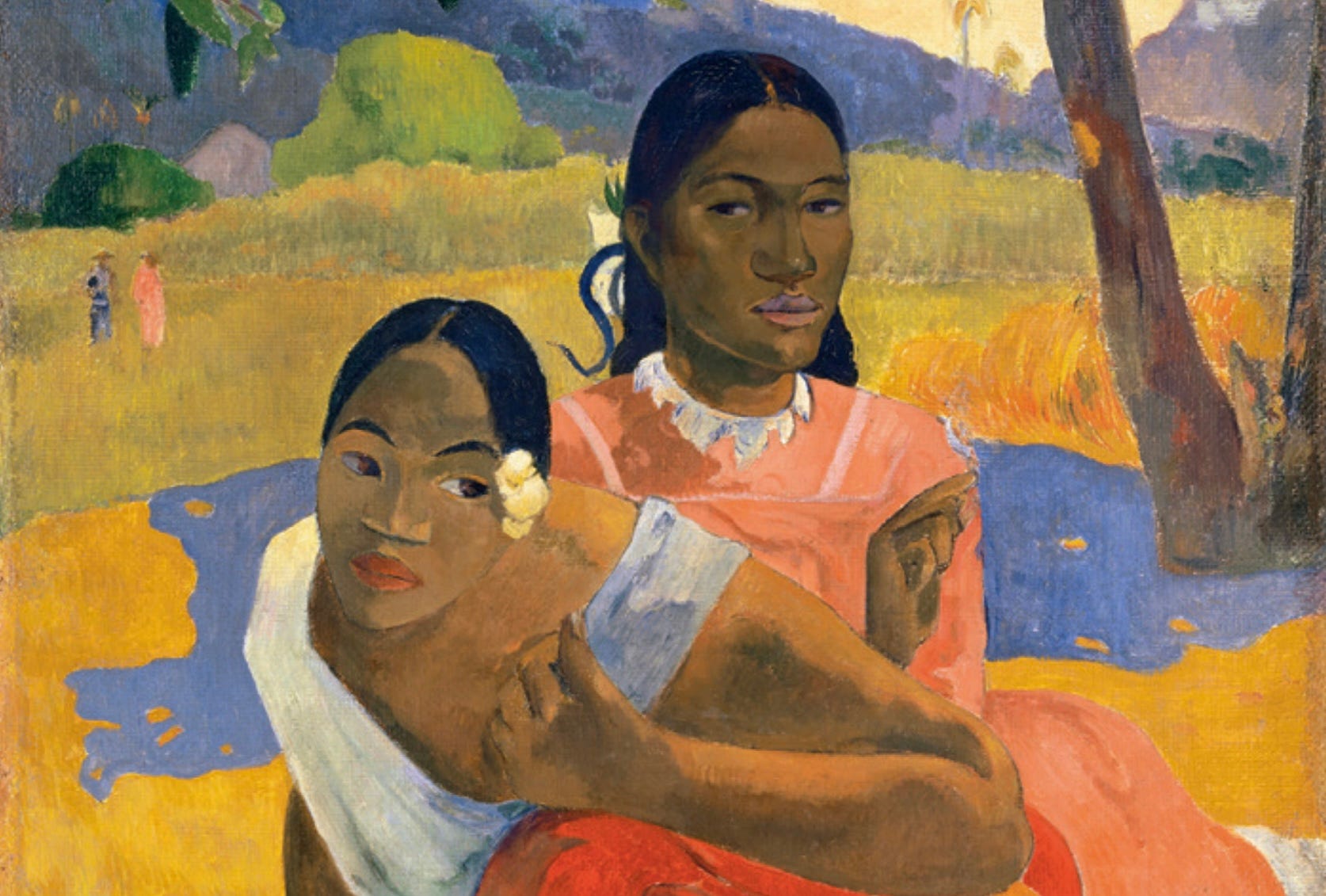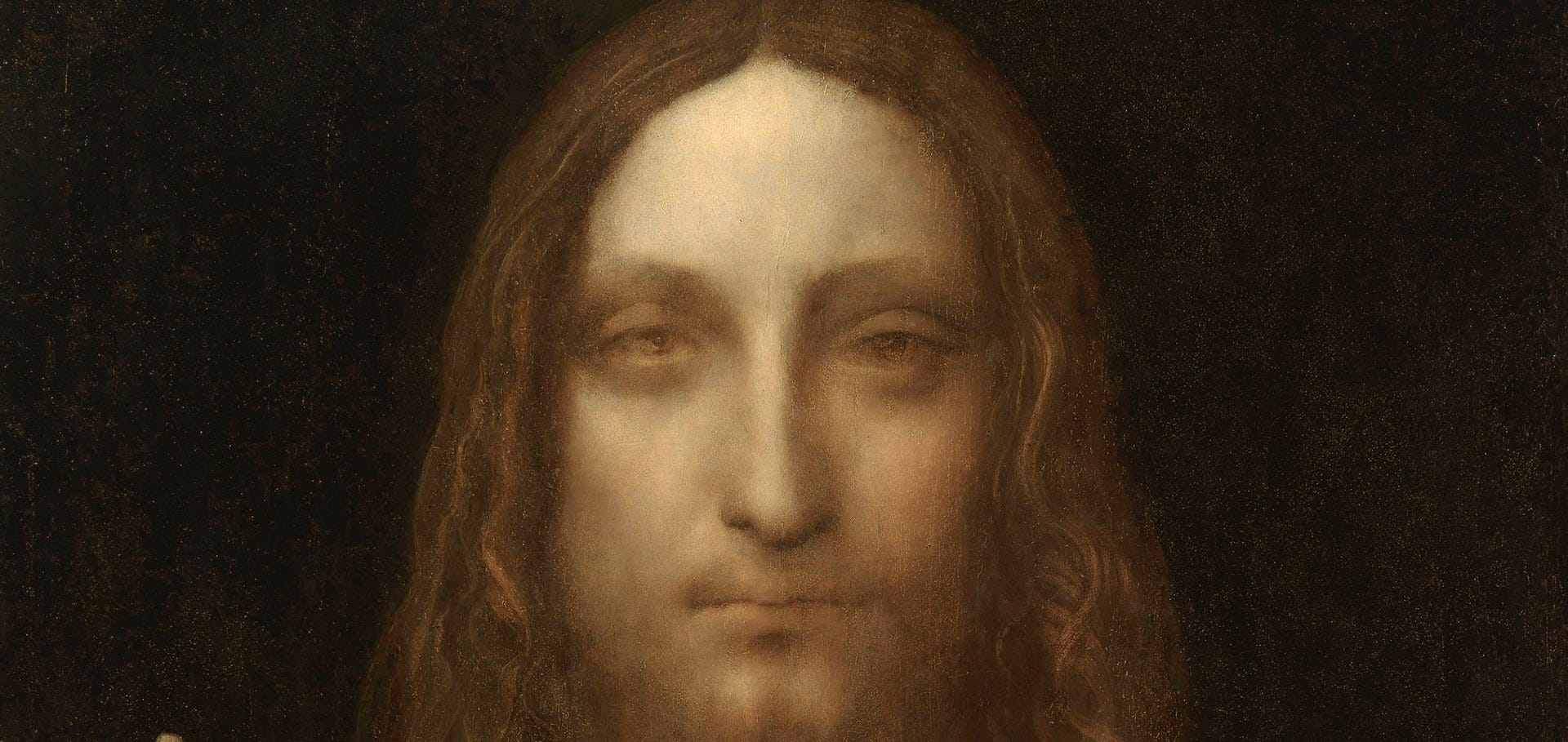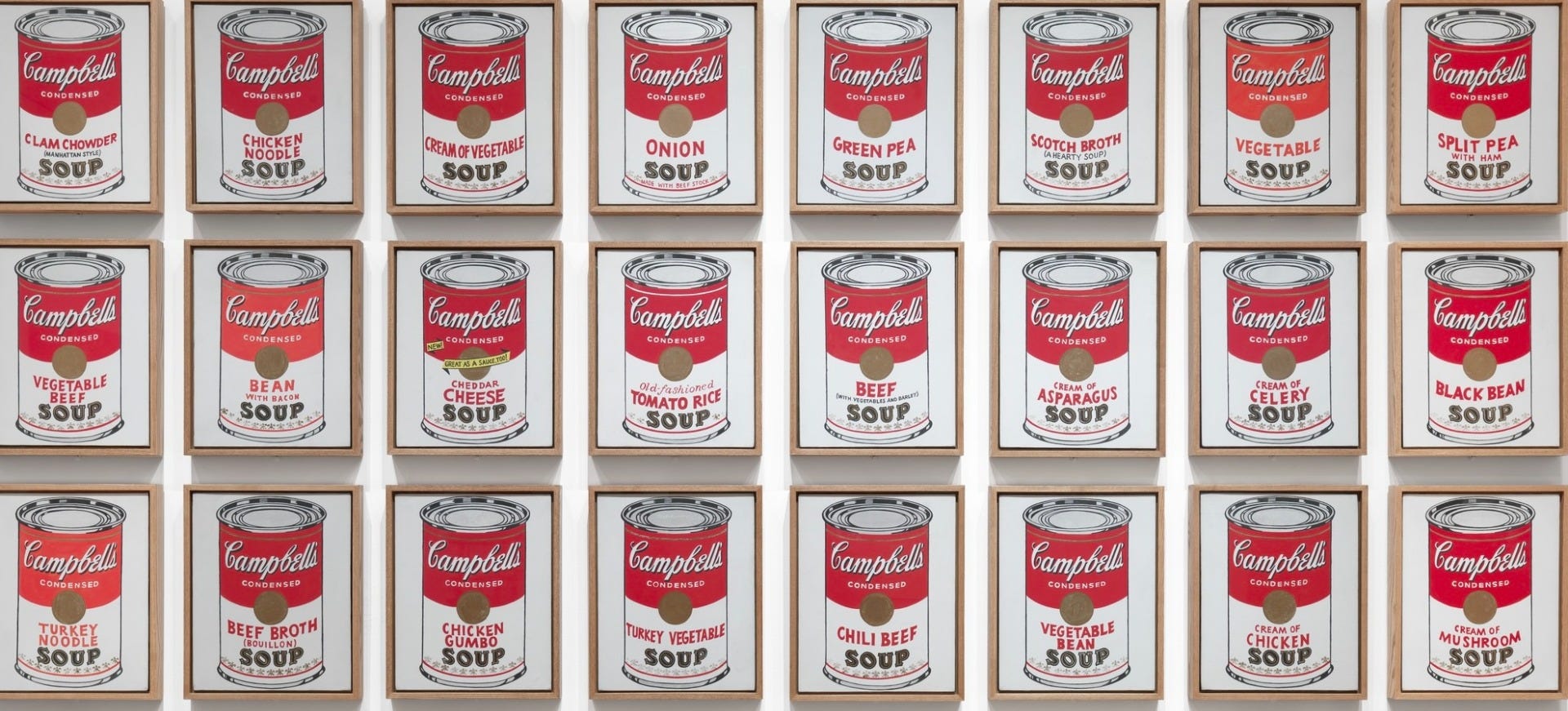Who Was Paul Gauguin? A Deep Dive into the Life of a Symbolist Pioneer
- Oct 2, 2024

Image: Paul Gauguin, When Will You Marry?, 1892. Oil on canvas. Private collection.
In 2015, Paul Gauguin’s When Will You Marry? set a record as one of the most expensive paintings ever sold, fetching approximately $300 million at Sotheby’s, purchased by a Qatari buyer. This moment not only highlighted Gauguin’s prominence in the art world but also brought renewed interest to his work during his time in Tahiti. His journey to Tahiti shaped not only his artistic vision but also the course of modern art.
The Influence of Tahiti on Gauguin’s Art: Analyzing When Will You Marry?
Painted in 1892 during Gauguin’s time in Tahiti, When Will You Marry? captures two native Tahitian women as its central figures. Set against a lush, tropical landscape, the women stand apart from any sign of European civilization, emphasizing the island’s untouched beauty—an idealized paradise that Gauguin sought but never fully found.
The younger woman, dressed in vibrant, traditional Tahitian attire, wears a flower in her hair, symbolizing her availability for marriage. In contrast, the woman behind her is dressed in Western clothes, alluding to the impact of French colonization on Tahitian life. This contrast between the native and the foreign is a theme woven throughout Gauguin’s work, reflecting his disappointment in finding a Tahiti that was already touched by Western influence.
Gauguin’s Style: Synthetism and Primitivism
Gauguin’s work, including When Will You Marry?, showcases his distinctive style, known as Synthetism—a blend of color, form, and symbolism. His bold use of color serves as more than a visual element; it carries emotional and symbolic weight. Gauguin famously described color as “a mysterious language, a language of the dream,” using it to communicate ideas beyond the visible world.
Gauguin’s love for “primitive” art—art that belongs to non-industrialized societies—was his response to modern industrial life. He believed that true art should be an abstraction derived from nature, as opposed to a direct imitation. His exploration of Tahitian life, even if often idealized or distorted by his fantasies, became central to his legacy. For Gauguin, Tahiti represented freedom from the constraints of European society and a return to a more authentic, uncorrupted existence.
Gauguin’s Symbolist Movement: How Tahiti Shaped His Artistic Vision
Gauguin was a leading figure in the Symbolist movement, which sought to express the unseen and the emotional over the realistic. Unlike his contemporaries in the movement, Gauguin rejected the overly literary nature of Symbolism, focusing instead on the abstract and the mystical. His Tahitian period is a perfect example of this. He sought to capture not just the physical beauty of the islands but also a deeper, spiritual connection to nature and humanity.
His move to Tahiti was driven by a desire to escape the suffocating influence of European society and embrace a more “primitive” way of life. Though Gauguin was disillusioned by the degree of Westernization he found in Tahiti, he used his imagination to create the tropical paradise that he longed for in his art.
Gauguin’s Controversial Personal Life and Relationship with Van Gogh
Paul Gauguin’s personal life was as colorful and complex as his art. After a failed marriage to a Danish woman, Mette-Sophie Gad, and with five children to support, Gauguin abandoned his family and left Europe in search of artistic freedom. In Tahiti, he entered into relationships with much younger Tahitian women, some as young as 13, which remains a controversial aspect of his legacy.
One of his significant personal relationships was with Pahura, a young Tahitian woman whom he eventually considered his wife during his time in the South Pacific. Their relationship, along with others he formed in Tahiti, became the subject of his artworks, and his fascination with Polynesian women became central to his artistic expression. However, these relationships also highlight the more troubling aspects of Gauguin’s character, particularly his exploitation of native cultures and his romanticized vision of “primitive” life.
Gauguin’s friendship with Vincent van Gogh was equally complex. The two artists had a deep, yet tempestuous relationship, culminating in Gauguin’s famous visit to Arles in 1888. Despite sharing mutual respect for each other’s talents, their personalities clashed. Van Gogh, passionate and emotionally sensitive, admired Gauguin’s boldness, while Gauguin often found Van Gogh’s intensity overwhelming. Their time together in Arles ended dramatically when, following a heated argument, Van Gogh famously cut off part of his ear. After this incident, their friendship cooled, but both artists continued to be inspired by each other’s work.
From Stockbroker to Symbolist Master in Tahiti
Paul Gauguin’s path to becoming a symbolist master was far from typical. Born in France, Gauguin began his adult life as a successful stockbroker, living comfortably with his Danish wife and children. His interest in painting began as a hobby, but after losing his job during a financial downturn in 1886, Gauguin turned to art full-time. He became increasingly involved with the Impressionist movement, though he soon sought to carve out his own unique artistic style, separate from the Parisian art scene.
After years of wandering as a merchant marine, he eventually left Europe for Tahiti in 1891, seeking a new life in an exotic, unspoiled paradise. However, what he found was far from the utopia he had imagined. The influence of French colonialism had already seeped into Tahitian society, and much of the native culture had been altered by missionaries. Despite his disappointment, Gauguin allowed his imagination to fill in the gaps, creating an idyllic world through his artwork.
Brief Mention: Gauguin: Voyage to Tahiti
Gauguin’s complex life, particularly his time in Tahiti, was dramatized in the 2017 film Gauguin: Voyage to Tahiti, starring Vincent Cassel. The film delves into his struggles with isolation, illness, and his relationships with the native women who became central to his artistic vision, offering a glimpse into the personal and emotional turmoil that marked his time on the island.
Gauguin’s Final Years: From Tahiti to the Marquesas
Despite his disappointment with the Westernized reality of Tahiti, Gauguin remained dedicated to his artistic vision, painting the paradise he longed for rather than the one he encountered. His later works during this period reflect a profound sense of alienation and a deepening disconnect from the world around him. After a brief return to France in 1893, where he clashed with critics and struggled with finances, Gauguin made the fateful decision to leave Europe behind for good.
Settling in the remote Marquesas Islands, Gauguin’s health deteriorated, worsened by years of illness and isolation. Yet, his passion for art never waned. Even in his final years, he continued to produce powerful, vivid works that explored themes of spirituality, identity, and his idealized vision of “primitive” life. In 1903, at the age of 54, Gauguin passed away, but his groundbreaking contributions to modern art would endure, shaping the course of 20th-century movements and influencing countless artists for generations to come.
Gauguin’s Enduring Legacy
Paul Gauguin’s legacy extends far beyond his Tahitian paintings. His bold use of color, rejection of realism, and fascination with “primitive” cultures influenced countless artists, including Pablo Picasso and Henri Matisse. His work laid the groundwork for many of the key movements of 20th-century art, from Fauvism to Surrealism.
Although Gauguin’s portrayal of Tahitian life has been criticized for its exoticism and romanticization of colonial narratives, his ability to convey emotion through color and form remains unparalleled. His works continue to inspire, challenge, and provoke discussions on the intersections of art, culture, and society.





